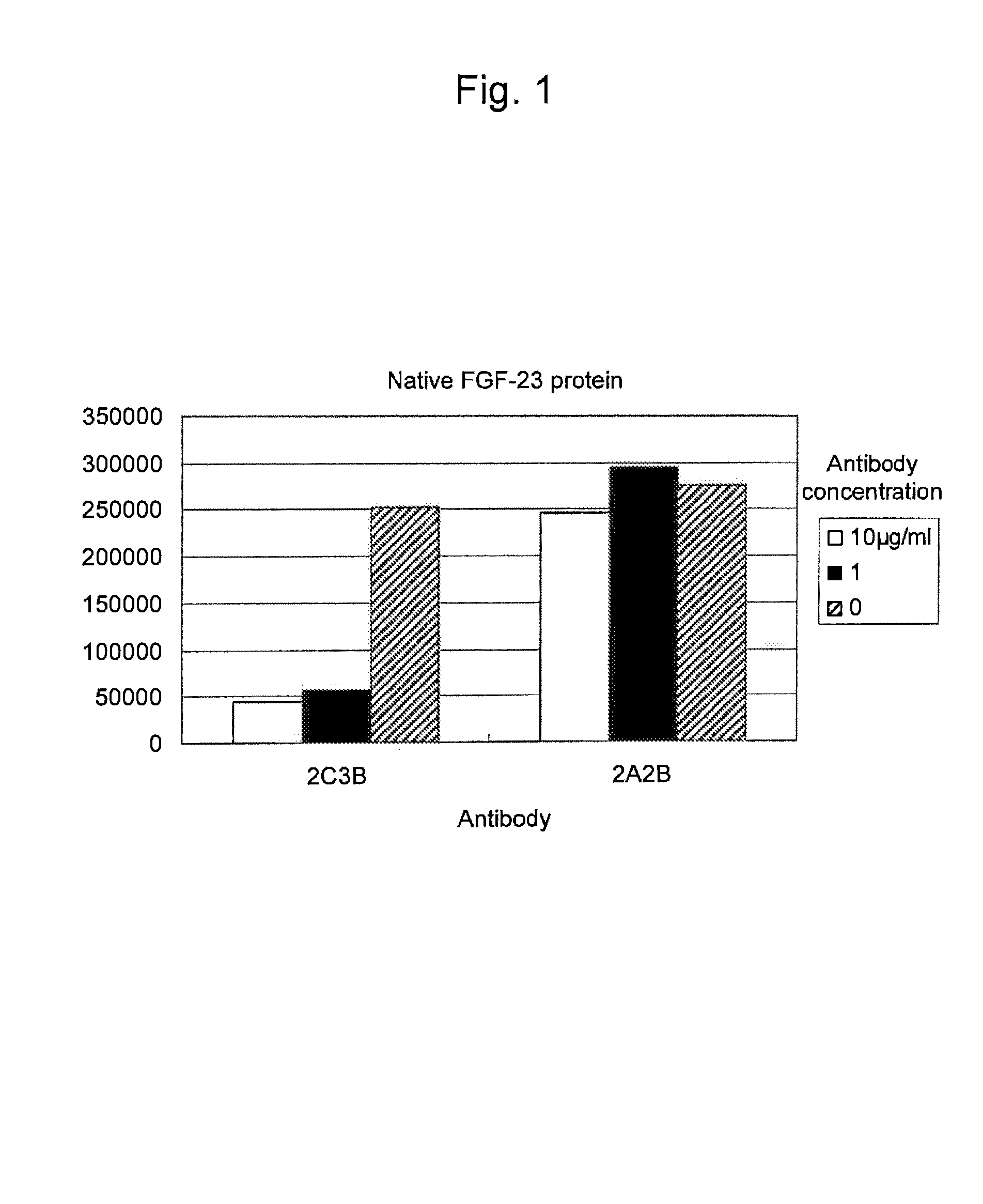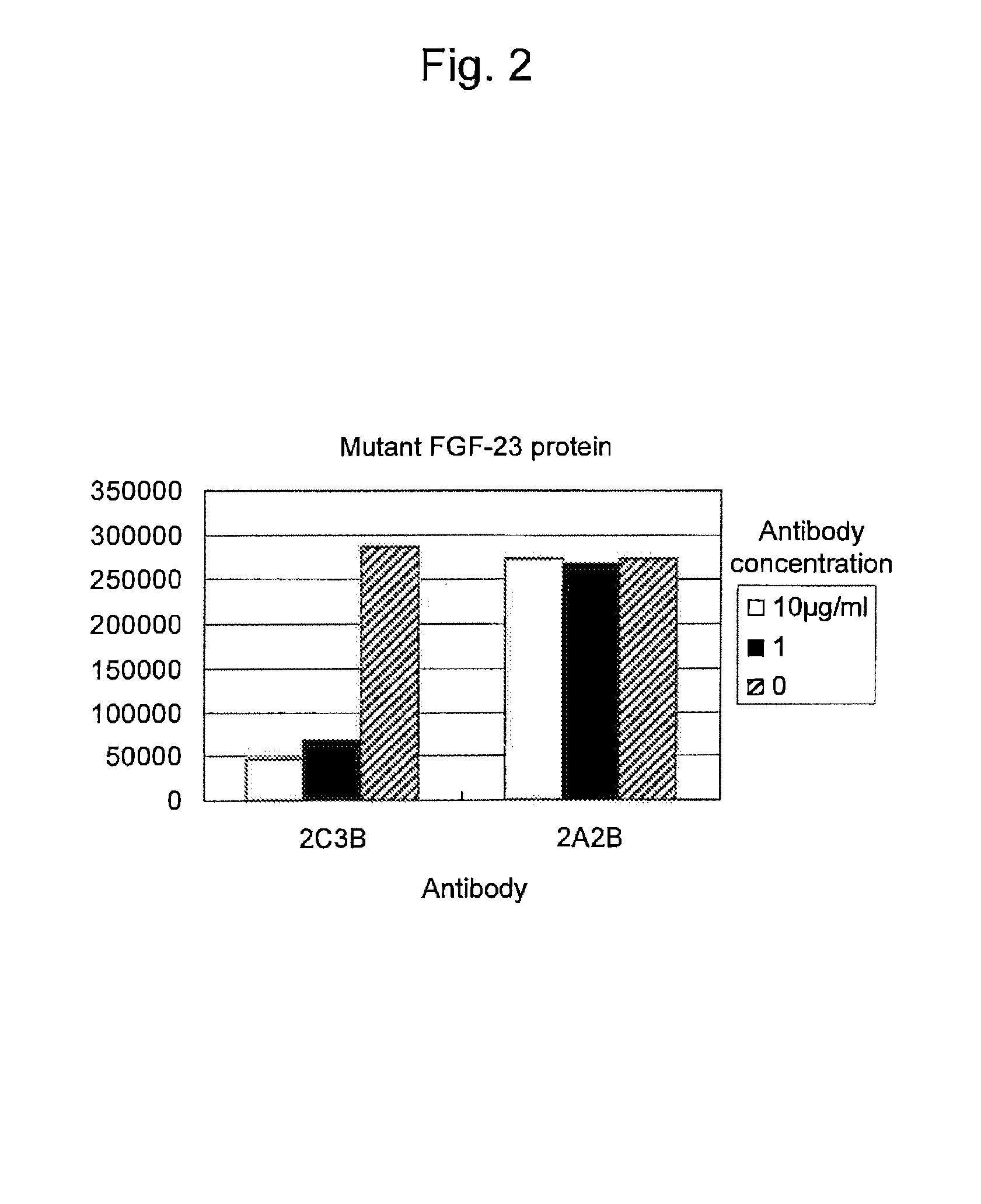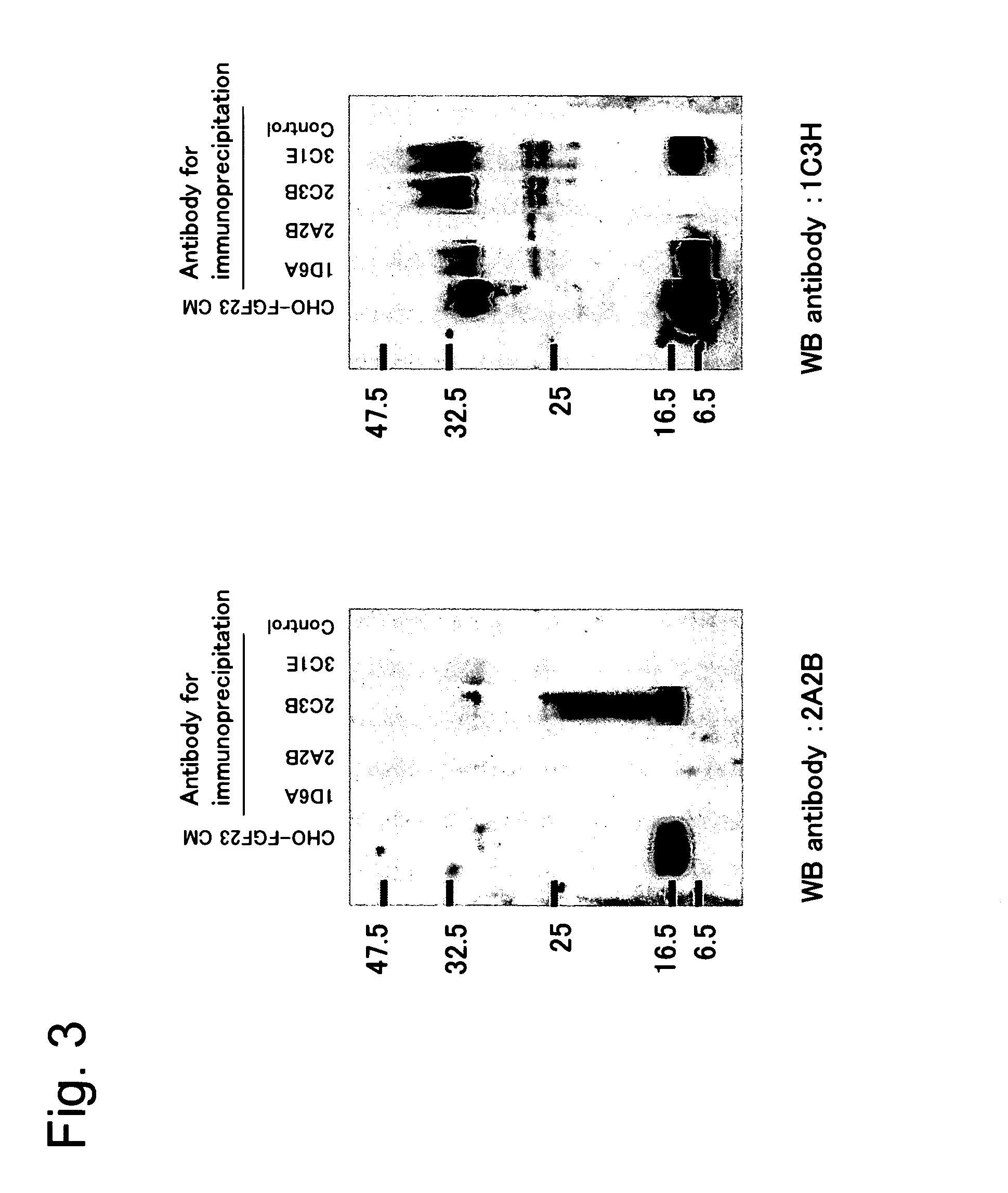Antibody against fibroblast growth factor-23
a growth factor and anti-fibroblast technology, applied in the field of anti-fibroblast growth factor-23, can solve the problems of decreased muscle force, dysbasia or dysstasia, and most responsible tumors are poor in growth ability, so as to improve the understanding of morbidity, improve the effect of medical practice, and reduce the concentration of phosphorus
- Summary
- Abstract
- Description
- Claims
- Application Information
AI Technical Summary
Benefits of technology
Problems solved by technology
Method used
Image
Examples
example 1
Construction of Recombinant FGF-23 Expression Vector
(1) Preparation of FGF-23H Protein Expression Vector
[0123]cDNA encoding FGF-23 was amplified after keeping the temperature at 96° C. for 1 minute by performing 35 cycles of PCR process, each cycle consisting of 96° C. for 30 seconds, 55° C. for 30 seconds, and 72° C. for 30 seconds using a cDNA library of a responsible tumor of neoplastic osteomalacia as a template, and a F1EcoRI primer (SEQ ID NO: 2), a LHisNot primer (SEQ ID NO: 3), and LA-Taq DNA polymerase. The F1EcoRI primer was annealed to a sequence that is present further upstream on the 5′ side of a nucleotide sequence encoding FGF-23, so as to add an EcoR I restriction enzyme site to the 5′ side of a region of the amplification fragment encoding FGF-23. The LHisNot primer contains a sequence annealing with a sequence on the 5 side of the termination codon of a sequence encoding FGF-23, and a sequence encoding a His6-tag sequence (His-His-His-His-His-His), followed by the ...
example 2
Expression of Recombinant FGF-23 Protein and Recombinant Mutant FGF-23 Protein
(1) Obtainment of FGF-23H-Expressing Cells
[0132]Approximately 20 μg of pcDNAFGF-23H was linearized by cleaving at an Fsp I restriction enzyme site within the ampicillin-resistance gene in the vector, and then purified. The purified product was dissolved in 10 μl of pure water, admixed with 1×107 CHO Ras clone-1 cells (Shirahata S., et al., Biosci Biotech Biochem, 59: 345-347, 1995), and then the gene was introduced into a cell by an electroporation method using Gene Pulser II (Bio Rad, U.S.A.). After these cells were cultured in a MEMα culture solution (Gibco BRL, U.S.A.) containing 10% FCS for 24 hours, Zeocin (Invitrogen, U.S.A.) was added to a final concentration of 0.5 mg / ml to the solution, and the resultant was cultured for 1 week. Cells that had adhered and grown were freed using trypsin, and then cloned by a limiting dilution method in the presence of Zeocin at a final concentration of 0.3 mg / ml, t...
example 3
Obtainment of Hybridomas Producing Mouse Monoclonal Antibodies Against Human FGF-23
[0137]Monoclonal antibodies were prepared in this example according to a general method as described in Introduction to Monoclonal Antibody Experimental Protocols (Tamie Ando, et al., “Tan-kurohn Koutai Jikken Sosa Nyumon,” KODANSHA, 1991) and the like. Balb / c mice were used as animals to be immunized. Immunization with human FGF-23 was performed by the following 2 types of methods depending on differences in immunogens.
(1) Immunization with a Combination of Administration of Vectors and Administration of Recombinant Protein
[0138]Initial immunization was carried out for Balb / c mice by introducing the INPEP4 / FGF-23 vectors prepared in Example 1 (10 or 50 μg / mouse) intravenously using Trans IT (trademark) In Vivo Gene Delivery System reagent (TAKARA SHUZO, Japan). Booster immunization was performed by introducing the same vectors once in week 1 after the initial immunization. Furthermore, the FGF-23 RQH...
PUM
| Property | Measurement | Unit |
|---|---|---|
| Length | aaaaa | aaaaa |
| Length | aaaaa | aaaaa |
| Length | aaaaa | aaaaa |
Abstract
Description
Claims
Application Information
 Login to View More
Login to View More - R&D
- Intellectual Property
- Life Sciences
- Materials
- Tech Scout
- Unparalleled Data Quality
- Higher Quality Content
- 60% Fewer Hallucinations
Browse by: Latest US Patents, China's latest patents, Technical Efficacy Thesaurus, Application Domain, Technology Topic, Popular Technical Reports.
© 2025 PatSnap. All rights reserved.Legal|Privacy policy|Modern Slavery Act Transparency Statement|Sitemap|About US| Contact US: help@patsnap.com



